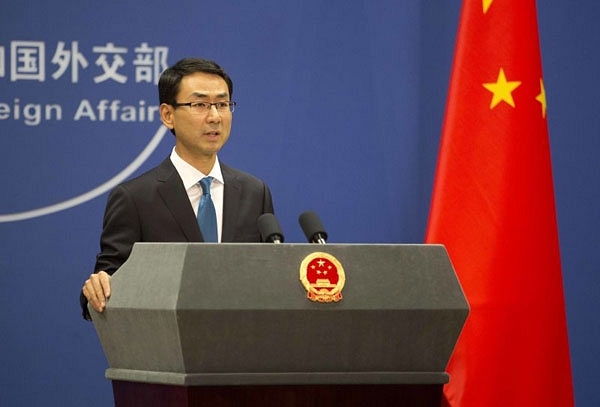Insta
Is China Misrepresenting Facts On The India-China-Bhutan Tri-Junction Boundary Question?

Spokesperson of China’s Foreign Ministry
Spokesperson of China’s Foreign Ministry claimed on Monday that former Indian prime minister Jawaharlal Nehru had in letters sent to Chinese Premier Zhou Enlai on 22 March 1959 and 26 September 1959 confirmed that there was no dispute on the China-Sikkim border.
“Former Indian PM Jawaharlal Nehru endorsed the 1890 Sino-British Treaty on Sikkim in a letter to the then Chinese counterpart Zhou Enlai in 1959,” spokesperson of China’s Foreign Ministry said at the regular press briefing.
The treaty in question here is the Anglo-Chinese Convention signed by the Great Britain and China on 17 March 1890 in Calcutta. The convention defines the boundary between Tibet and Sikkim, demarcated on the ground in the year1895.
However, the spokesperson did not present the true picture. In these letters (available here and here), Nehru said more than what the spokesperson cited him as having said. Contrary to the spokesperson’s claim, Nehru had not fully endorsed the 1980 convention, saying that it was only applicable to the boundary between Tibet and Sikkim in the northern part and not to the tri-junction.
“This Convention of 1890 also defined the boundary between Sikkim and Tibet; and the boundary was later, in 1895, demarcated. There is thus no dispute regarding the boundary of Sikkim with the Tibet region. This clearly refers to northern Sikkim and not to the tri-junction which needed to be discussed with Bhutan and Sikkim, and which is today the contentious area. And once more, let us not forget that the 1890 Treaty was an unequal treaty as Tibet, Sikkim and Bhutan were not involved,” Nehru wrote to Zhou in 1959.
Clearly, Nehru did not endorse the convention when it came to the India (Sikkim)-China-Bhutan tri-junction boundary because Bhutan and Sikkim were not part of the discussions that resulted in the signing of the treaty in 1890.
According to the Hindustan Times, India has consistently refused to accept China’s reference to the 1890 treaty, saying that the two countries decided in 2012 that boundary points between India and China where another country is involved will be finalised in consultation with the third nation (in this case Bhutan).
Support Swarajya's 50 Ground Reports Project & Sponsor A Story
Every general election Swarajya does a 50 ground reports project.
Aimed only at serious readers and those who appreciate the nuances of political undercurrents, the project provides a sense of India's electoral landscape. As you know, these reports are produced after considerable investment of travel, time and effort on the ground.
This time too we've kicked off the project in style and have covered over 30 constituencies already. If you're someone who appreciates such work and have enjoyed our coverage please consider sponsoring a ground report for just Rs 2999 to Rs 19,999 - it goes a long way in helping us produce more quality reportage.
You can also back this project by becoming a subscriber for as little as Rs 999 - so do click on this links and choose a plan that suits you and back us.
Click below to contribute.
Latest